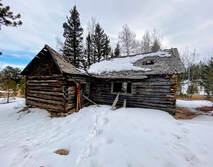
It is not uncommon to stumble on a Colorado town, ranch or mining settlement while hiking through the area. Especially when you consider that Colorado had 1,500 settlements and today only 600 of these are known and 300 still stand. Of those, only a fraction have been preserved or documented. Most are lost to time, absent from maps, and are returning to nature. But, these structures still offer us historic insights and a glance into the lives of the American Pioneer and the people of the early 20th century.
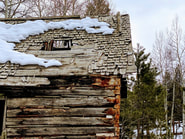
In this article, I would like to tour you through one such settlement and discuss how the architecture that we found came to be. However; finding these locations requires a certain amount of preparation, navigation, and experience with backwoods hiking. This trip (and journeys like it) are not to be taken lightly as you could lose your bearings quickly in the woods.
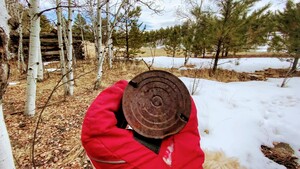
With that said; even with proper preparation, you will need to use your senses when you feel that you are generally close to a ghost town. The biggest indicator of a nearby ghost town is debris and rubbish on the ground. As you approach an abandoned area you will begin to see pieces of tin, glass, and wood fragments scattered about. Modern Colorado is very clean and seeing debris of any variety is out of place. This makes it easier to distinguish from modern rubbish and historic debris. Most ghost towns have a designated garbage pile or rubbish area. If you’ve found such a pile you are typically 50-100 yards from a ghost town. However, you will begin to see debris as far away as 1,000 yards from the center of the site.
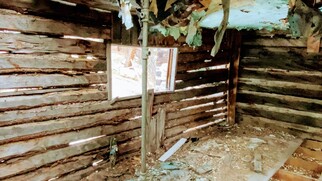
The site that I explored is a hybrid of two architectural styles that are native to Colorado; “Rustic” and “Pioneer-Log”. Both of these styles are characterized by their use of stones, logs, and the natural materials. They are intended to blend in with the environment around them and because of this can be very difficult to spot. These buildings are often vacant homesteads or hunting lodges. Some are used to this day as tourist-facilities or dude ranches.
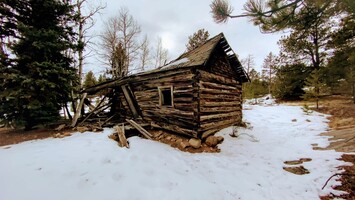
The building techniques used emphasized craftsmanship and were typically built by hand. The vast majority of these buildings were constructed between 1900 and 1940. The Rustic style is often categorized by its stone foundations, projecting roofs, battered (sloped) walls, small-paned windows, and stone chimneys. Rustic buildings used more commercially manufactured hardware and materials; for instance, wood paneling, window frames, and interior doors. The roofs often featured “Hip-Roofs” and have space for storage or additional living space
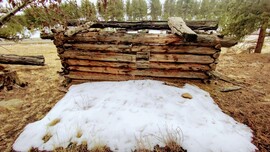
The differences between the Pioneer-Log and Rustic style are subtle but reflect the time in which they were built. Pioneer-Log cabins; as their name implies, were built during the initial U.S. settlement period. They exhibit a quick and crude form of construction. In contrast to the stone chimneys found on the rustic cabin, the Pioneer-Log building used metal flues attached to iron stoves. The roofs were simple structures with soft pitches.

The buildings that we came across are mostly Pioneer-Log style, but the main structure is a mixture of both styles. This is because it uses manufactured wood and has a hip-roof. However, it doesn't have a stone chimney or foundation. This experimentation and hybrid style is likely a contributing factor to the buildings' partial-collapse.
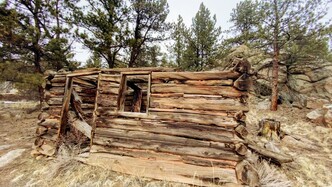
The land was a homestead built in the early 1900s. In the warm months, they used the land to harvest potatoes, carrots, and other vegetables that were shipped by truck or rail to Denver. Throughout the year they raised livestock; such as cattle and bison. In the winter months, most of the ranchers worked for a privately owned ice packing company. This company helped to bridge the wintertime gap in income for many of the area ranchers. The company would cut large blocks of ice from Lake George and ship them to the Pikes' Peak region via the Colorado-Midland Railway.
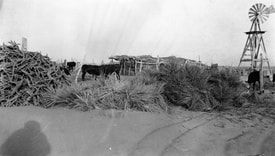
This region was flush with agricultural work year-round. These ranchers' lifestyle was the petri-dish for mountain-farming and subsistence agriculture in the west. This is especially significant because Colorado wasn’t exactly considered a “Garden of Eden” at that time. Early explorer John C. Fremont wrote:
“The impression of the country traveled over today was one of dry and barren sands” and the next day he said; “The same dreary barrenness, except that a hard, marly clay had replaced the sandy soil…” 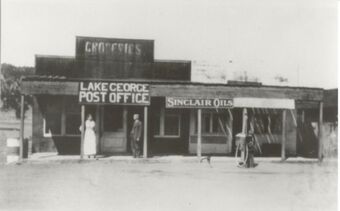
Fremonts’ expeditions/reports combined with a perceived threat of Native American attack gave the nation the perception that Colorado was an untamable, barren wasteland. At this time it was referred to as the “Great American Desert”. This was the true “wild-west”.
Regardless, a group of hearty Colorado Natives was already well-practiced in subsistence agriculture. The Ancestral Puebloans, from the Mesa Verde region, planted crops and used shared irrigation for centuries prior to U.S. settlement. Eventually, Hispanic migrants moved from New Mexico to the San Luis Valley. They transplanted their crops and shared irrigation traditions that are used in the region to this day. 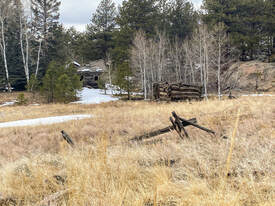
It was thanks to a man named Alvin Steinel who saw potential in Colorado agriculture. In 1926 he wrote:
“To the practiced eye of the grazier, it was clear that these western grasses differed in character from the varieties to which he had been accustomed in the States...It was a discovery confirmed by later experience that grasses cured by Nature on the ground not only maintained stock in good flesh, but that animals actually increased in weight during the winter”. 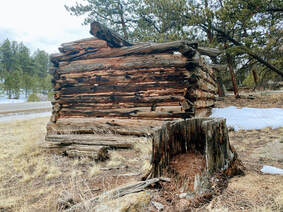
Eventually, the barren landscape and unnavigable rivers that Fremont saw gave way to lush valleys and healthy livestock. The land was being irrigated and water laws were rapidly developed throughout Colorado. Once derelict farmland; such as the one we explored, were some of the earliest settlers to harvest well-watered Colorado land. In fact, it was the loss of water to a nearby ranch that eventually doomed the farm that we explored.
Thanks for reading this vLog. Please be sure to subscribe to my YouTube Channel and comment below! Photos from the day:
0 Comments
Your comment will be posted after it is approved.
Leave a Reply. |
AuthorThank you for visiting! This is a collection of media from the lost and abandoned corners of the world. Please have a look around, I hope you enjoy. Archives
April 2022
Categories
All
|
Libraries |
Support |
|


